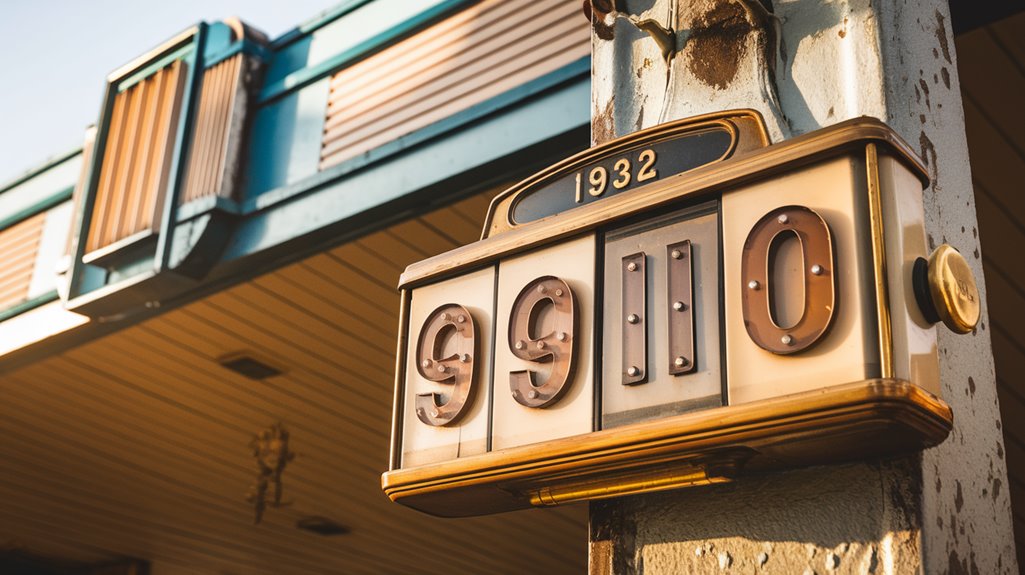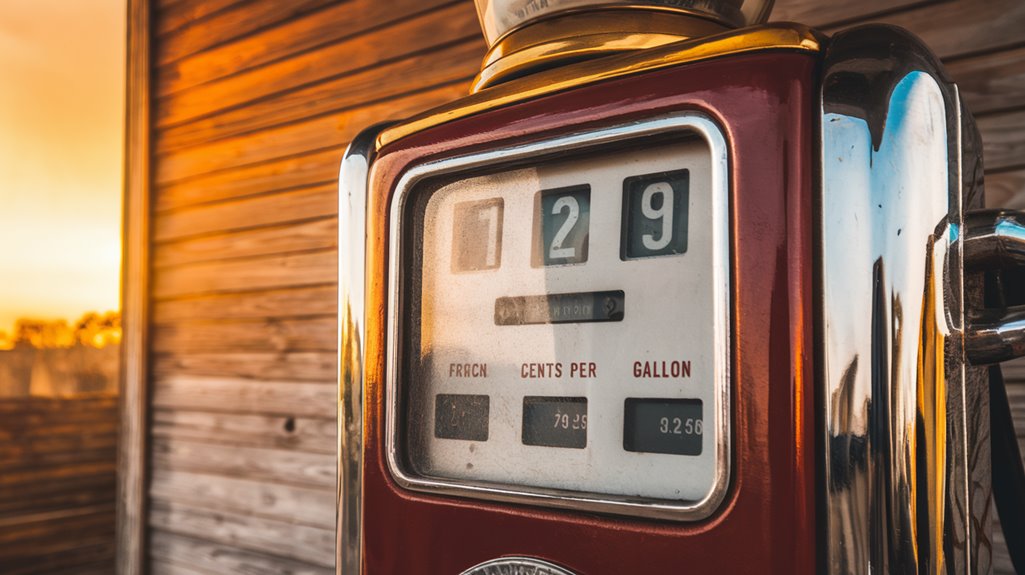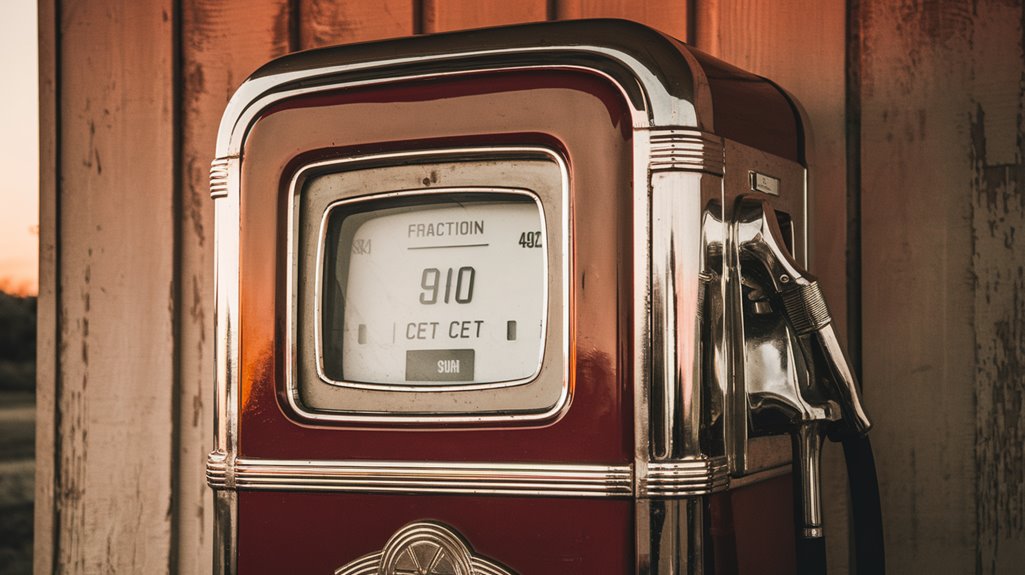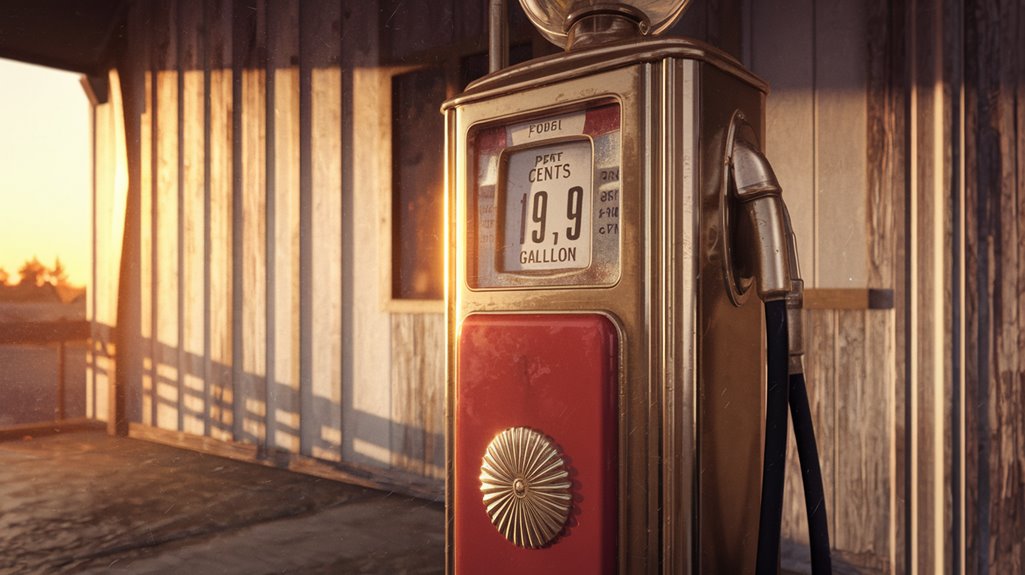Gas Prices End in 9/10 of a Cent Due to an Old Law
Like the penny that won't die, the peculiar 9/10 fraction on gas price signs has become an American fossil trapped in amber. You've probably noticed it every time you fill up your tank, wondering why gas stations can't simply round up or down to the nearest cent. But this isn't just a quirky marketing gimmick – it's a direct result of Depression-era legislation that's shaped how you buy gas for nearly a century, and its impact runs deeper than you might think.
The Birth of Fractional Gas Pricing in 1932

When the federal government introduced its first gas tax in 1932, it sparked a pricing revolution that would shape how we buy fuel for decades to come.
During the Great Depression, gas stations faced a critical decision about historical pricing when they'd to incorporate the new one-cent federal tax into their prices. Today, this pricing strategy has proven so effective that gas prices everywhere still end in .9 cents.
With gas costing around 10 cents per gallon, the tax implications were significant. Rather than adding a full penny and potentially driving customers away, stations discovered a clever solution: they'd add just 9/10 of a cent to their prices. This tax was part of the Revenue Act of 1932 and was initially meant to be temporary.
This strategy helped them remain competitive while managing the tax burden. In an era when consumers watched every penny due to economic hardship, this fractional pricing approach proved so effective that it became the industry standard.
How a Depression-Era Tax Changed Gas Prices Forever
The introduction of the federal gas tax in 1932 permanently transformed America's fuel pricing landscape. When Congress passed the Revenue Act, adding a one-cent tax per gallon, retailers faced a critical challenge: how to pass on this cost without losing customers during the Depression.
The historical significance of this moment can't be understated. With gas prices as low as 10 cents per gallon in some areas, a one-cent increase represented a dramatic 10% jump. This led to a fascinating pricing evolution as retailers began listing prices in fractions to minimize the psychological impact on cost-conscious motorists. This practice proved highly effective, as fractional pricing tactics became a standard marketing strategy by the 1950s. In fact, numerous attempts to eliminate this pricing structure have failed, including when an Iowa law banning 9/10 pricing was repealed just four years after its passage.
What started as a temporary measure became permanent, with the tax rate steadily increasing over the years: 1.5 cents in 1941, 2 cents in 1951, and continuing upward to fund America's growing transportation infrastructure.
The Psychology Behind the 9/10 Pricing Strategy
Pricing psychology has shaped how you perceive gas prices since the Great Depression, with the ubiquitous 9/10ths of a cent serving as a masterclass in consumer manipulation.
This pricing strategy leverages your brain's tendency to focus on the leftmost digit, making $3.699 feel markedly cheaper than $3.70.
When Jim Davis experimented with dropping the 9/10ths in 2006, customers actually perceived his prices as higher, despite them being slightly lower.
That's because you've been conditioned to expect this fractional pricing at every pump across America.
The practice originated when gas taxes were implemented to fund the construction and maintenance of America's growing highway system.
The precise measurement capabilities of modern fuel dispensers made it possible for retailers to implement fractional pricing accurately.
The impact of these pricing strategies extends beyond consumer perception – it generates half a billion dollars annually for the industry.
While you might consciously ignore that fraction of a cent, it's quietly influencing your purchasing decisions at every fill-up.
Why Gas Stations Can't Break the 9/10 Tradition
Breaking free from the 9/10 pricing tradition proves nearly impossible for gas stations due to deeply entrenched economic and regulatory factors.
You'll find this practice rooted in the Revenue Act of 1932, which introduced fractional gas taxes during the Great Depression. Today's pricing regulations in seventeen states, along with established consumer behavior patterns, make it challenging to deviate from this norm. Gas station owners face slim profit margins, often earning just five cents per gallon.
The impact on the industry is substantial, generating roughly half a billion dollars annually from this fraction of a cent. The practice began when gas prices were low, making fractional changes more significant to consumers.
When you consider how digital pumps, wholesale pricing structures, and state and federal taxes are all calibrated to this system, you'll understand why change is unlikely.
Consumer behavior also plays a role, as you've grown accustomed to mentally rounding down prices, making the 9/10 addition an effective pricing strategy.
The Hidden Economic Impact of Fractional Pricing

While fractional pricing may seem like a minor detail at gas stations, its economic impact reaches far beyond the pump, influencing market dynamics and consumer behavior across multiple industries. Studies show that 60% of prices in advertising use the digit 9 as their final number.
You'll find that these pricing strategies have revolutionized financial markets by improving efficiency and reducing trading costs. When businesses implement fractional pricing, they tap into powerful psychological triggers that affect your purchasing decisions. The left-digit effect makes you perceive $3.99 as considerably less than $4.00, even though the difference is minimal.
Beyond consumer behavior, decimalization has transformed market operations by increasing liquidity, narrowing bid-ask spreads, and enabling high-frequency trading.
These changes have made markets more transparent and competitive, ultimately benefiting you through reduced costs and improved market access.










